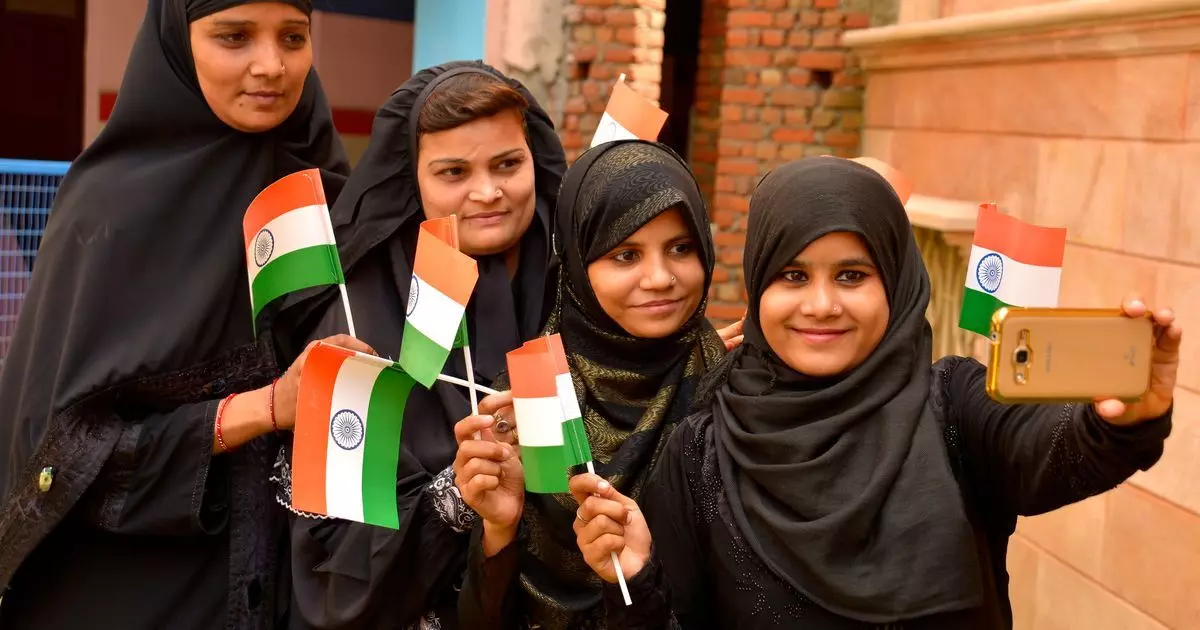

It is the truth, the Muslim fertility rate in India declined by half
text_fieldsWhat role demography does play in the election process of democratic India is no longer a hidden truth. So diverse is India's population based on different parameters of which religion and caste have cardinal influences. With the distinction of being the second country in the world with the largest population after China, India's successive governments after independence had their population control plans implemented but missed a massive change in results.
The result of a recent survey by the US-based Pew Research Center, however, says that the country is somehow on the right trajectory towards population control. It is still a question whether declining births can be attributed to the holistic methods the different governments have adopted to control the population.
The survey is clear in its sense that India's fertility rate has been declining rapidly in recent decades where an average Indian woman can be expected to be delivering 2.2 children in her lifetime. As compared to economically well-placed countries in the world, India's current birth rate is higher, but for the country itself, it is lower than what it was in 1992 (3.4) or 1950 (5.9), according to the survey.
The most important part of the survey is the fertility rate based on India's different religious sects. Though every religion in the country has seen its fertility rate being affected, it is the more than 50% fertility fall of the Muslim community that is distinct in the survey. The data available from India's National Family Health Survey shows Indian Muslims' fertility rate has dramatically declined from 4.4 children per woman in 1992 to 2.6 children in 2015.
Among different religions, the current fertility rate of the Muslim community - 2.2 children - can be seen as the highest but it is hypothetical to bolster it as one of the devastating explosions of the Muslim population as compared to the total Muslim population in the country in the context of India's majority Hindus' 2.1fertility rate. Hindu community made up 79.8% of India's 1.2 billion (120 crores) population as against Muslims 9.8% of the country's total population, the census conducted in 2011 said.
From the religious perspective, Muslim women might be bearing somewhat more children than what the majority of Hindu women can be expected to give birth to. It is evident from the data that the gaps in childbearing between India's religious groups, particularly between Hindus and Muslims, are generally smaller than they used to be.
It shows that the propagation the right-wing politics in the country is floating about the increasing Muslim population is nothing short of bogus as the declining and converging fertility patterns of these two religious groups are found to be almost the same or have little changes, which thereby breaks a myth created only for political advantage. From the national perspective, the Muslim community is the only religious group that experiences a major fall in its population.
The religious proportion of the population
Among other major religious groups in India such as Christians, Sikhs, Buddhists and Jains, who together make up nearly all of the remaining 6% of the population of the country, there is little change in their population or has been somewhat stable since the first census after the independence in 1951. The fertility rate of Jains is something that should be read as an addendum which is the lowest of 1.2 among other major religions in the country.
In the Hindu community which comprises 79.8% of India's total population, there is a meagre fall of 0.7 per cent points in their population from the 2001 census and 4.3 points below the 84.1% recorded in 1951. Meanwhile, the share of Muslims grew from 13.4% in 2001 to 14.2% in 2011 – up by a total of 4.4 percentage points since 1951, when the census found that Muslims comprised 9.8% of India's population.
What drives the fertility rate down
There are many factors to which the declining fertility rate of the country and the population is attributed. But the principal point at this point is the advances in adaptiveness of evolving global trends driven by education and unexhausted technological advances. The impact of which, however, is visible across the demography but how different religious sects got their population-wide dominance and decline in a particular region is mainly linked to migration. Millions of people were forced to leave their places when the partition took place following independence in 1947, which was, obviously along religious lines.
While millions of Muslims migrated to newly founded Pakistan, Hindus and members of other religious groups migrated to the new India, creating a permanent impact on the polity of both countries. Migration is one of three main mechanisms, along with fertility and conversion that causes religious groups to shrink or expand, the report says.
More than 99% of people who live in India were also born in India. Migrants leaving India outnumber immigrants three-to-one, and religious minorities are more likely than Hindus to leave. Religionswitching, or conversion – when an individual leaves one religion for another or stops affiliating with any religion – also appears to have had a relatively small impact on India's overall composition, with 98% of Indian adults still identifying themselves with the religion in which they were raised, the report says.
By this narration, fertility can be adjudged as the biggest factor in the modest change in religious proportions in India in the decades after independence. Though religion can be counted as one of the key factors in the fertility rate increase or decrease, education also plays a role in childbearing. While educated women across all religious sects in urban opt for modest childbearing plans, in rural this is somehow not in the same line.
Other prosperity indicators of childbearing are life expectancy and average levels of wealth where those women who have better access to schooling, jobs and health care tend to have fewer children. The declining childbearing age has also impacted fertility. Younger populations have more women entering their prime childbearing years and, as a result, tend to grow faster than older populations, the report said.
It is a reality borne out by facts that religion has little influence as compared to other factors at play in the determination of the number of children a family has.






















